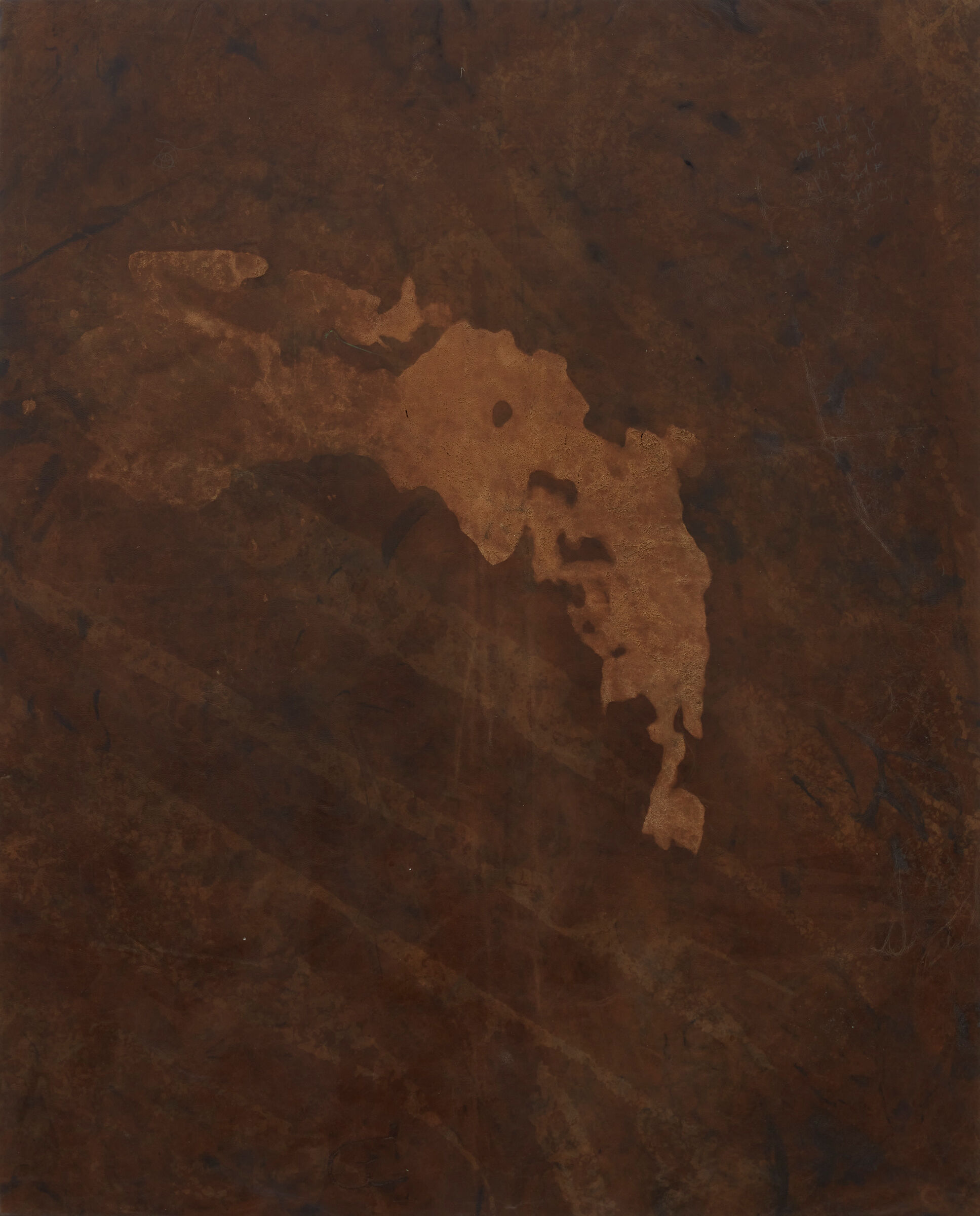Whitney Biennial 2022: Quiet as It’s Kept | Art & Artists
Apr 6–Oct 16, 2022
Whitney Biennial 2022: Quiet as It’s Kept | Art & Artists
Rindon Johnson
31
Floor 5
Born 1990 on the unceded territories of the Ohlone people (San Francisco, CA)
Lives in Berlin, Germany
With leather, Rindon Johnson makes objects that “live nearish to paintings.” He began with the idea that his existence as a Black American functioned as a byproduct of colonial capitalist accumulation, automatically aligning him with any other byproducts. In a form of linguistic kingship, Johnson turned his attention to leather. These works begin with a living animal, the cow. “Who makes a mark,” he has asked. “Was it me, or the animal, or something else? What does it mean to care for something? To display? To alter?” Before beginning his work on a hide, Johnson leaves it outdoors over a period of time so that the elements interact with the material. The resulting wear and degradation suggest many things because the leather is literally skin. Straddling this line of subjugated and subjugator, Johnson has noted his presence: “I draw circles, lines, dots, hoping they’ll eventually mean something or have meant something, in time.”
An island is all surrounded by water In the morning foreboding Quickly solved by dripping A shower, you know A slow crawl to the park Wait first meat A coffee A hill A roundabout A breeze on the lake A larking body of water, once screaming once babbling, once running A sleeping family A white child with A water gun A tall tree A tunneling A horn Another A too small blanket, you in my mind and next to me A wind in my ears, my basement look what I found, leave the lights on A sigh A tie on a rooftop A still flooding Another horn All in the flight path An immovable object A clapping of leaves A certainty, it is seven feet deep One boy watches the other A horn, 2022
-
0:00
Rindon Johnson, An island is all surrounded by water In the morning foreboding. . .
0:00
Rindon Johnson: My name is Rindon Johnson.
I work with leather because it’s a byproduct of the meat industry. A lot of my original thesis with this work was thinking about how American Blackness is a byproduct of the transatlantic slave trade and I wondered what other byproducts I could work with. I began to realize, when I started trying to find a material that was as Black as I was, that, because of the way that capitalism functions in our society—especially in American society—every material is touched by the violence of it. And so what became clear to me was that I could choose any material and it would be filled with the charge and the pain of capital accumulation.
Narrator: Other products—like indigo, coffee, wax, and wood stain—also interested Johnson because they share histories inflected by exploitation. These materials trace colonial trading routes and exhaust natural resources. Though he uses these materials to alter the cow hide, he purposefully adds little fixatives and in doing so acknowledges the impermanence of these marks.
Rindon Johnson: I’m using a series of indigo baths and indigo washes across the cows to try and arrive at a very deep blue. It’s not going to work, and so much of my work is about things not working.
Narrator: Johnson marries a set of material reactions in this work: the mercurial nature of the colors he uses and the leather’s subsequent changing over time. The artist describes this relationship as a “line of recognition” between one medium and another.
Rindon Johnson: I have a lot of questions about neglect and I have a lot of questions about what it means to leave something alone. Do you leave something alone because you want to give it the agency to be itself or do you leave something alone because you don’t care about it?

